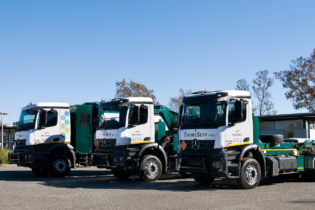Sasol and General Electric (GE) power and water have together developed new water technology that will clean waste water, while also providing biogas as a by-product for power generation.
This new technology, known as Anaerobic Membrane Bioreactor Technology (AnMBR), will be further developed at a new demonstration plant at Sasol’s research and development campus at its Sasol One site in Sasolburg. “This is another exciting technological innovation that will further entrench our position as a world-leader in gas-to-liquids (GTL) technology and synthetic fuels production. While sophisticated water treatment technologies are already employed at Sasol’s major operations, this particular development will enhance our efficiency even further, ”says Ernst Obersholster, Sasol Group executive for international energy, new business development and technology. “GE is excited to be partnering with Sasol on this initiative that further outlines our commitment to supporting the sustainable development of South Africa with advanced infrastructure technologies, services and solutions. This partnership demonstrates what the private sector can achieve by working together for the benefit of growing the economy and making the economy competitive, ”says Tim Schweikert, president and CEO for GE South Africa. AnMBR involves anaerobic micro-organisms that are able to live in environments devoid of oxygen, such as sediment layers on floors of lakes, dams and the ocean. These organisms are almost ubiquitous – found in the human digestive system, under the earth surface, deserts and mountain peaks, to name a few. Sasol currently uses aerobic microbes to treat GTL and coal-to-liquids (CTL) effluents in ORYX GTL, Qatarand Synfuels, Secunda facilities. One of the by-products from the Fischer-Tropsch (FT) process is an effluent stream rich in organic acids and alcohols. Traditional (aerobic) treatment technologies treat this effluent by converting the organics to carbon dioxide. The benefit of the AnMBR is that the micro-organisms convert these organics into a methane rich bio-gas which can then be used for power generation. This then results in an overall efficiency improvement in the GTL process. By converting the effluents to a valuable product (power) there is a resulting improvement in the GTL value proposition. Another benefit of the AnMBR is that it produces almost 80% less waste biosolids than the previous generation process.The treatment of GTL derived effluents is complex and challenging. Sasol pioneered the treatment of effluents from the GTL process in RasLaffan, Qatar, where effluents are treated and recycled for use as irrigation water in the city of RasLaffan.
Sasol’s second generation offering, which is currently being designed for the US GTL facility, is the aerobic Membrane Bioreactor (MBR). The AnMBR helps maintain Sasol’s leadership position in this field by converting wastes into value-adding products. Micro-organisms break down complex organics, such as proteins and carbohydrates through a process called hydrolysis, to simpler building blocks, such as sugars that provide food to the micro-organisms. The waste produced is bio-gas, which can be used as feedstock to generate power. “The organics in waste water generated from our operations have proven to be the ideal food, or substrate, for Anaerobic micro-organisms, ”explains Thulani Dlamini, executive manager research and development at Sasol Technology. “We will now continue to explore and develop this technology further with the potential for commercial application to our future GTL facilities.” “The new AnMBR is one of the many solutions that can be developed in the petrochemical and refining environment to benefit all other industries,” says Daniele Scenarelli, GE account executive for Sasol. It is anticipated that the technology will be commercially ready early in 2015. Sasol will have exclusive rights to apply this technology to FT based plants whilst GE will have the right to market the technology for other industrial uses.







